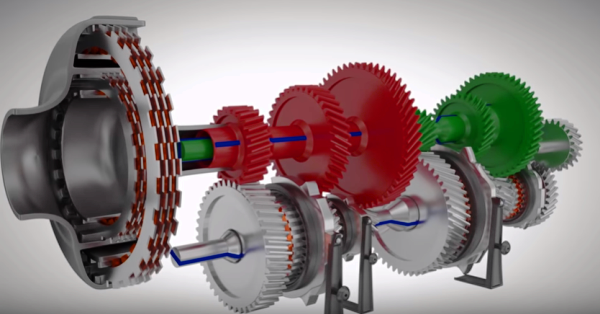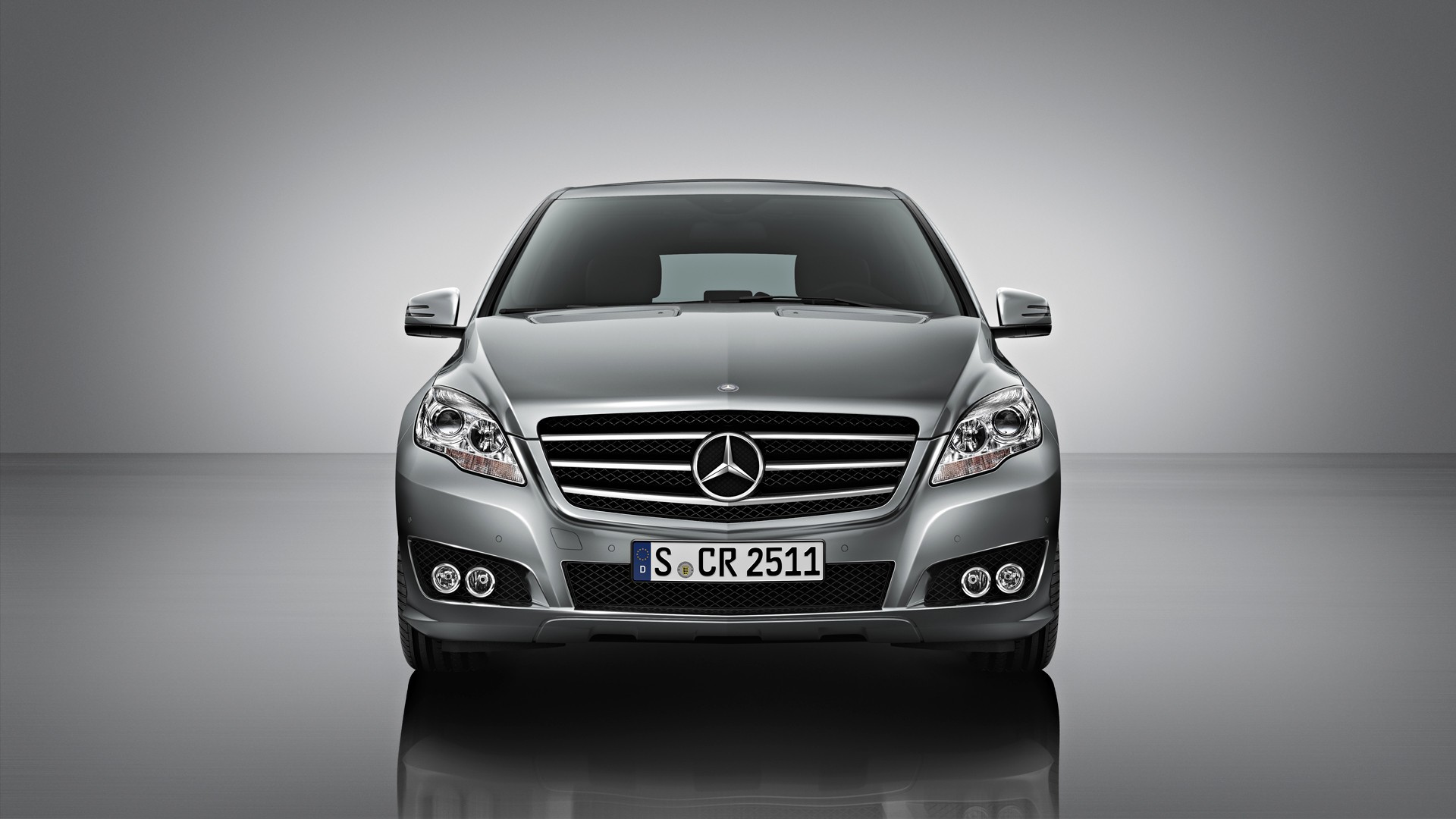The dual clutch transmission (DCT), also referred to as a double- or twin-clutch transmission, combines the best of both manual and automatic transmissions into a hybrid that requires no input from the driver to shift gears, provides smooth and fast shifting, and operates more efficiently than either a manual or an automatic transmission. Its unique configuration is known as a semi-automatic transmission. It uses two separate clutches, one which engages even numbered gears in the transmission while the other engages the odd numbered gears. While one gear, third gear for example, is engaged, the clutch has the next gear, possibly fourth gear if the driver is speeding up, ready to go so it can instantly switch from third to fourth without losing any of the engine's power and without requiring the driver to press down the clutch pedal as he would need to in a manual transmission car.
Since the car's driver isn't required to press a clutch pedal to shift gears, it would seem the dual clutch transmission is automatic. Yet it is actually semi-automatic. Electro-hydraulic fluid is used to engage and disengage the clutches. This fluid forces the clutch disk against the flywheel of the engine and the power spins the car's wheels. When the car slows, sensors send less fluid to the clutch and it disengages because the fluid's force is not strong enough to hold it against the flywheel.

Dual clutch transmissions, or DCTs, have become a popular transmission option for vehicle designers as they combine the gear efficiency of a manual, with the.
The dual clutch transmission from ZF enables lightning-fast gear changes under load without interrupting the torque. It is thus ideally suited for vehicles with dynamic/sporty designs. In them, the ZF transmission performs a balancing act between pure sportiness and the highest driving comfort. The seven-speed dual-clutch transmission 7DCT300 is a transmission of third generation with Smart Actuation. The dual-clutch transmission for mid and front transverse applications sets standards in efficiency. Due to Smart Actuation, the transmission requires only as much energy as a light bulb. DCT stands for Dual Clutch Transmission, but that alone doesn’t fully explain it. A DCT is a type of Automated Manual Transmission (AMT) that has two clutches instead of just one. They are gaining. 2016 to current 2.4 L (DE2) 8-speed Dual-clutch transmission; The ILX originally featured a 2.0-liter I4 engine making 150 hp mated to a 5-speed automatic transmission, or a version of the Civic Si's 201 hp 2.4-liter I4 engine mated to a 6-speed manual.
Two clutches make the dual clutch transmission possible. While one gear is engaged, the clutch prepares to switch to the gear on the opposite clutch. Since one clutch holds the odd numbered gears and the other the even numbers, the clutches constantly switch back and forth and the transition from one to another happens so quickly the driver never feels the car change gears.
Advantages of the dual clutch transmission include more efficient performance and faster shifting speeds. Since the next gear is already ready to switch into, the change occurs almost instantly and the shift is smooth. No engine power is lost, as it is in automatic transmissions using torque converters to engage and disengage the engine. The torque converter is similar in principle to the electro-hydraulic fluid, but loses some of the power from the engine when engaging and disengaging.
Disadvantages of the dual clutch transmission include its high cost and the complexity of its parts. Cars utilizing this type of transmission cost more and repairs take more effort due to the extra parts and how they are aligned with one another. With more parts, there are more problems that can arise.
Driving a vehicle that has a dual-clutch transmission is not difficult after you learn the process, but you have to take your time to avoid making harmful mistakes. Because not all drivers understand dual-clutch transmissions fully, people often engage in risky behavior, resulting in expensive repairs. Learning a thing or two about the harmful driving habits of dual-clutch transmission vehicles can save you a lot of money in the future.
Once again, Engineering Explained helps drivers understand why their habits might harm their transmission.
For example, if you have noticed a delay when you try to shift gears, learning about the cause will help you to avoid the problem. You will find that there are habits that will slowly destroy your vehicle without your knowledge. Once you know which of your driving habits might be harming your car, you will know how what to avoid them and keep your vehicle running at peak performance.
Switching to Neutral when Stopping
Wet Dual Clutch Transmission
When coming to a stop, drivers will often put a dual-clutch transmission car in neutral because they think that doing so protects the transmission.
Engineers had solved this issue before it might have become an issue. In dual-clutch transmission, when you apply a certain amount of pressure to the brakes, and the car slows down enough, both clutches will disengage automatically, which means the car will be in neutral even though you did not shift to neutral. As the clutches are designed to disengage on their own while you slow down enough, leaving your vehicle in drive will not be harmful.
If you opt to switch gears because you think that you are preventing your vehicle from incurring damage, or saving fuel, you are not really doing much. The transmission already took care of the issue without the need to shift gears. If your primary goal is to save fuel, turn your vehicle off at a red light if you know it will be a while before you get moving again.
Taking your Foot off the Brake when on an Incline
If you drive a vehicle that has a dual-clutch transmission, learning to handle inclines safely and effectively is one of the biggest obstacles to overcome. When you are behind the wheel of an automatic vehicle, the spinning of the torque converter will hold the car in place, preventing it from rolling. As for dual-clutch vehicles, the clutch pack itself attempts to hold the vehicle in place. However, the force needed to maintain the position of your vehicle will put even more stress on the clutch – it will heat up and start slipping. Over time, this behavior will cause damage to the clutch, and you will be facing steep maintenance fees by the time you notice any signs of trouble.
Using your brakes at each incline will work wonders in protecting the health of your vehicle. When you use brakes, the clutch is disengaged. By taking the pressure off the clutch, you will reduce the amount of heat, wear, and stress that is applied.
When it comes to dual-clutch transmission vehicles, there are various types of clutches that behave differently when put under pressure. The rule of thumb tells us that multi-plate and wet clutches absorb more heat than other types, while dry clutches tend to be lighter and more efficient.
Inching Forward in Traffic or While Towing
Like most people, you have spent your fair share of time stuck in traffic during rush hour or in bad weather on the freeway. Slowly inching forward in a dual-clutch vehicle is a bad idea. By having your foot on the brake and slowly creeping forward, your first gear clutch is not fully engaged, which means there’s more wear on the transmission.
It is important to know that the clutch is designed to handle such driving behavior. Even so, avoiding this type of driving as much as possible will prolong the longevity of the transmission. To prolong the life of your clutch, you will want to wait for a larger gap in traffic before you take your foot off the brake to move forward. Only moving when you have sufficient room will allow your vehicle to switch to first gear, lessening the stress on the engine.
Downshifting while Holding the Accelerator Pedal and Upshifting while Holding the Brake
The way that you switch gears will play a role in your ability to control your car or truck. Without giving it much thought, people sometimes downshift while accelerating and upshift with a foot on the brake. Shifting gears at the wrong time will NOT cause damage, but it willaffect your performance – you will experience a delay in shifting. With at least two transmission shafts (one for odd and the other for even gears), a dual-clutch transmission will always preselect the gear to which you intend to shift.


When you are speeding up – engaging the accelerator pedal – the dual-clutch transmission will preselect a higher gear. If you are engaging the brake and slowing down, the transmission will preselect a lower gear.
If you apply the brake before shifting up, you will experience a delay in shifting. This delay is a result of the vehicle preselecting a lower gear based on your usage of the brake. Since the correct gear was not preselected, it will take some time for the vehicle to select the correct gear.
Dual Clutch Transmission Fluid
There is another likely scenario where you might experience a lag in shifting gears: When you approach a red light and the light turns green before you have enough time to stop. To maintain the flow of traffic, you will need to accelerate, but it might take some time before the vehicle shifts into gear because both of your clutches might be disengaged if you slowed down enough, as we already explained earlier.
Launching the Vehicle
In an attempt to launch a vehicle quickly, people often hold the gas and brake pedals at the same time for too long. If you do that, the heat and tension that is generated will transfer to the clutch and cause damage. Luckily, some vehicles have systems in place to prevent damage from launching your vehicle the wrong way. As the speed of the engine increases, the vehicle will disengage the transmission if you are not moving forward. However, unless you know whether your car or truck offers this level of protection, you will not want to take the risk.
Final Thoughts

As with any investment, you must always do everything that you can to prevent problems with your vehicle. If you plan to purchase a vehicle with a dual-clutch transmission, or if you already own one, knowing how to avoid bad driving habits will considerably increase the longevity of your transmission and your vehicle.


Comments are closed.